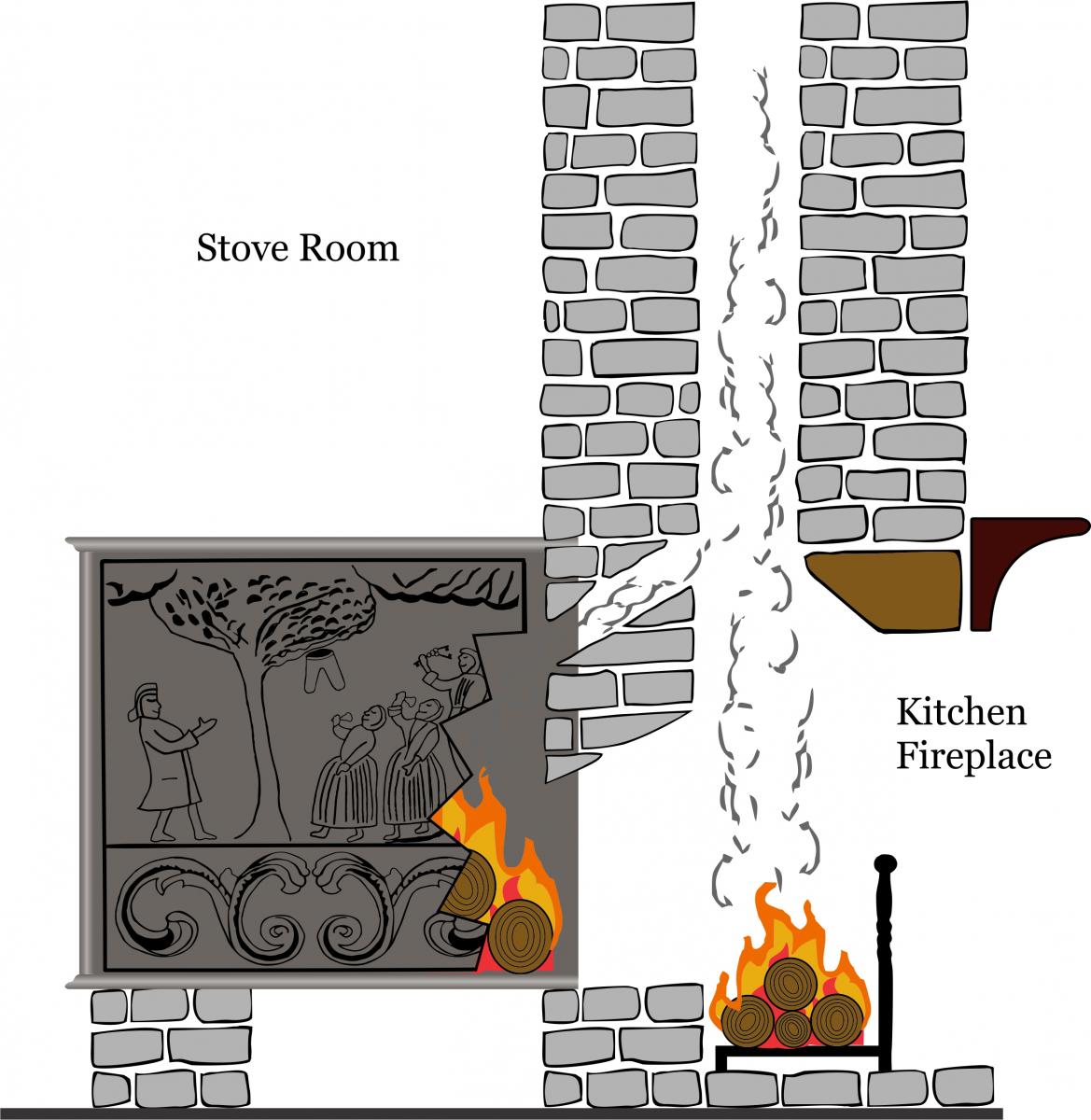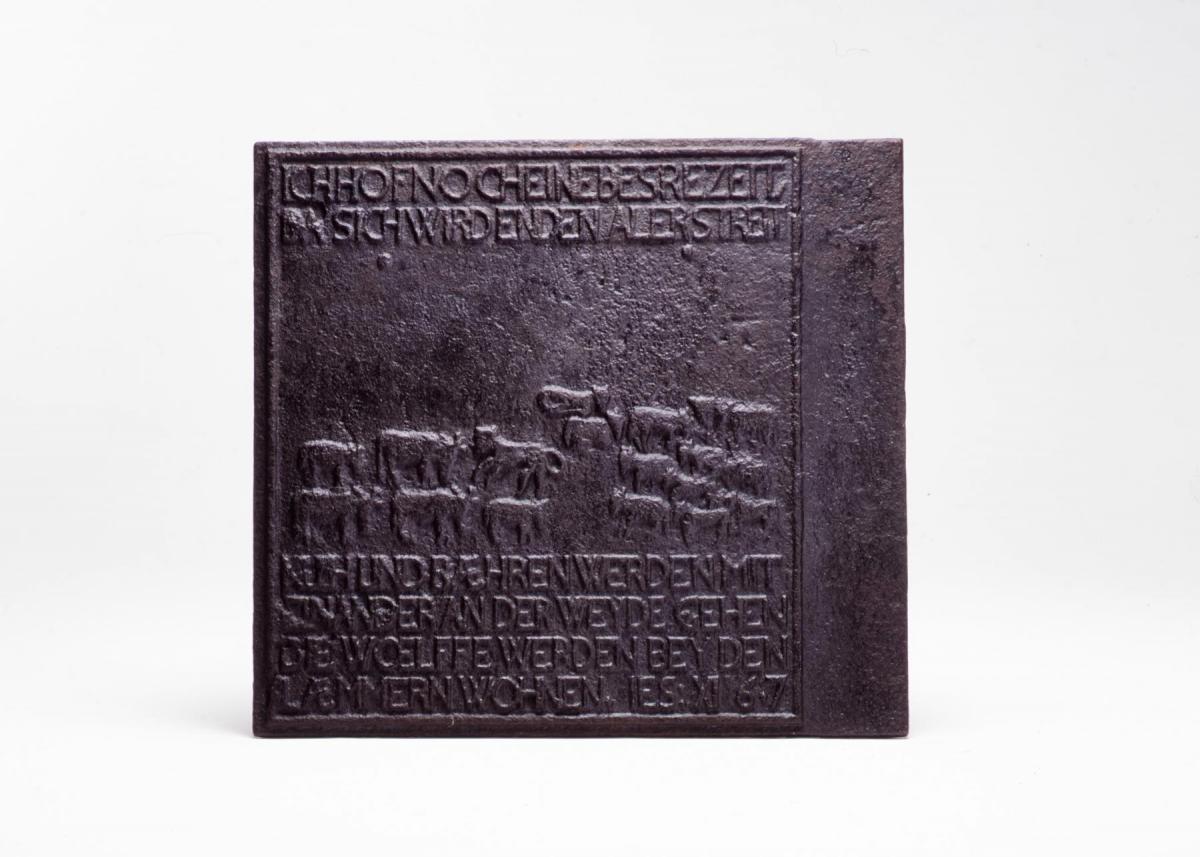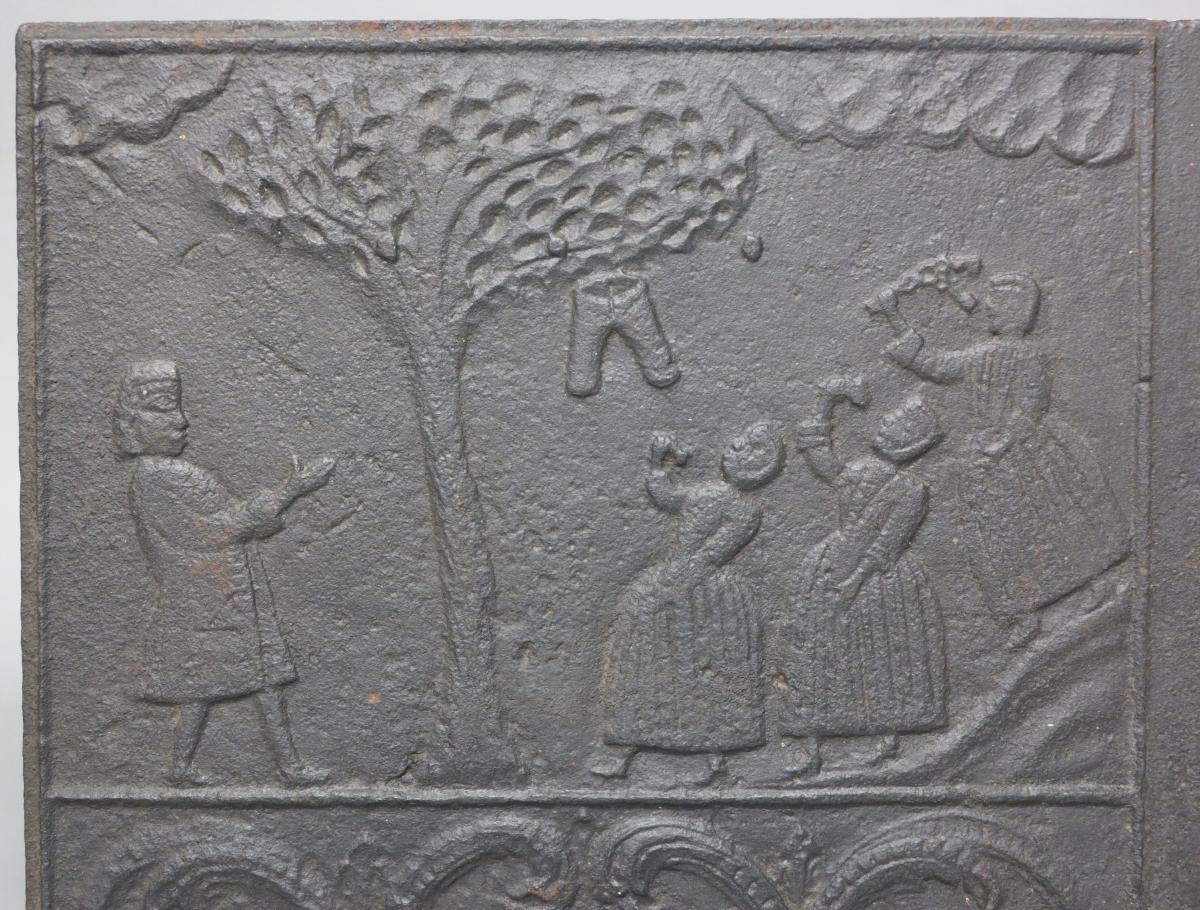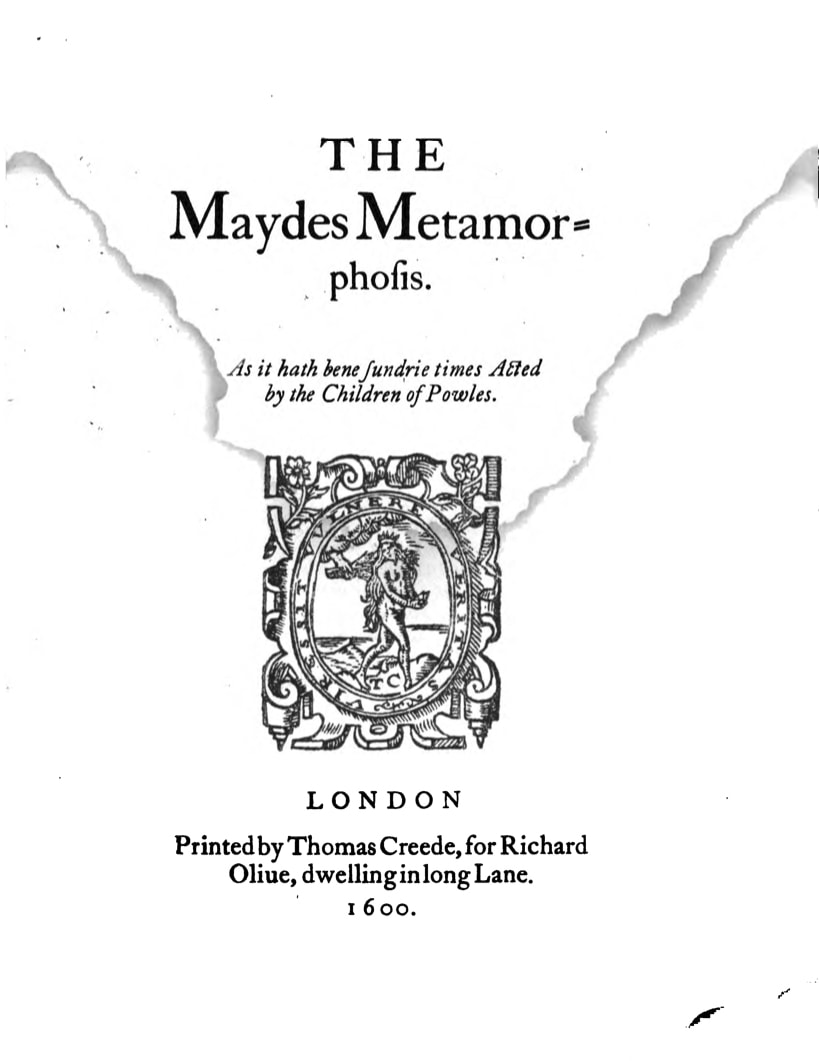The flip of the calendar from December to January marks the first of three Leap Years that will occur this decade. While Leap Year only occurs only every four years, it never fails to leave its mark on the popular culture of the time.
By Curator of Collections Nick Powers
Admittedly, some impressions run deeper than others. The 2010 romantic comedy Leap Year starring Amy Adams and Matthew Goode sadly didn’t change the face of modern cinema (though it did provide some great shots of the Emerald Isle). The MSV, on the other hand, has in its collection evidence of Leap Year traditions that are a little more solid. In fact, they are cast in iron.
I am referring here to the side plate of a jamb stove cast by Marlboro Furnace in western Frederick County during the Leap Year 1768. Jamb stoves were fixtures of German households in the colonial period. A typical jamb stove included five cast iron plates—front, two sides, top, and bottom—supported from below by a carved stone or wood plinth. While English settlers preferred smokier open fireplaces, Germans preferred the smokeless, radiant heat that stoves offered.[i]
Unlike later stoves, a jamb stove could not be fed from the room in which it stood. Instead, the person installing the stove mortared it into a wall that had a fireplace on the other side (usually the kitchen). An opening in the fireplace wall allowed the homeowner to load the stove through its back with either wood or hot coals.
Jamb stoves were frequently the focal point of the room in which they stood. Adding to their appeal were figural scenes cast into the front and two sides plates. These scenes ranged from the comical to more sober moral lessons drawn from the Bible.
The Leap Year in 1768 provided the perfect opportunity for the foundrymen of Marlboro Furnace to draw on European peasant folklore for their design. In fact, the side plates display one of the most common (and archaic) aspects of Leap Year traditions: the swapping of traditional gender roles between men and women.[ii]
On the right-hand side, three women in large skirts and head caps ring hand bells and a set of keys in an attempt to call down a pair of trousers hanging in a tree. Trousers were a traditional symbol of male authority over the household. At left, a man claps his hands and is likely meant to be laughing.
The implication is that the man has placed the trousers up a tree to give the women the opportunity to seize typically masculine power. In other words, during Leap Year they can “wear the pants” in the family (an idiom that has existed in the English language since at least the mid-1500s).[iii] But at the same time the trousers are out of reach of the women who are thus prevented from changing the status quo.
The prejudiced idea of “giving” women power that they weren’t normally allowed during a Leap Year continued over the next two centuries. In the late 1800s and early 1900s, it was publicly acceptable for women in Europe and America to flip the script and ask men to marry them on Leap Day (February 29).
Never missing an opportunity to cash in, Victorian postcard companies produced Leap Day cards. Many of the cards lampoon the idea that women could seriously take the lead in relationships and marriage (the word cringeworthy come to mind for more than a few examples). Recently, dozens of postcards have been digitized and are now viewable online through the Leap Year Postcard Database at Monmouth University in New Jersey.
Now is the perfect time to revisit objects like the Marlboro Furnace stove plate and explore how they helped reinforce or dispute gender roles of the past. The year 2020 marks the 100th anniversary of the ratification of the 19th Amendment, which cemented women’s right to vote in the U.S. Constitution. The MSV will be celebrating this milestone of democracy with programming throughout the year, so check our Events Calendar often. In the meantime, try not to get your pants stuck up a tree…
[i] Priscilla J. Brewer, From Fireplace to Cookstove: Technology and the Domestic Ideal in America (Syracuse, NY: Syracuse University Press, 2000), 25-26.
[ii] John Bivins, Jr., “Isaac Zane and the Products of Marlboro Furnace,” Journal of Early Southern Decorative Arts 11, no. 1 (May 1985): 40-41; available online: https://archive.org/details/journalofearlyso1111985muse (accessed December 30, 2019); Henry C. Mercer, The Bible in Iron: Pictured Stoves and Stoveplates of the Pennsylvania Germans, edited by Horace M. Mann and Joseph E. Sandford (Doylestown, PA: The Bucks County Historical Society, 1961), 202-203.
[iii] Christine Ammer, The American Heritage Dictionary of Idioms (Boston, MA: Houghton Mifflin Company, 2003), 457.





